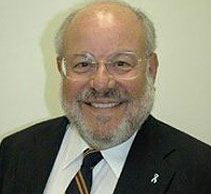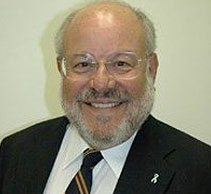SUFFOLK CLOSEUP: PSEG Has A History
 Thursday, May 9, 2024 at 11:07PM
Thursday, May 9, 2024 at 11:07PM SUFFOLK CLOSEUP
By Karl Grossman
 I first got to learn about PSEG (Public Service Enterprise Group) in the early 1970s driving down Dune Road in the Hamptons and there, next to Hot Dog Beach, was a weather station with various devices. It was surrounded by a chain link fence with a sign saying U.S. Atomic Energy Commission and Brookhaven National Laboratory on it.
I first got to learn about PSEG (Public Service Enterprise Group) in the early 1970s driving down Dune Road in the Hamptons and there, next to Hot Dog Beach, was a weather station with various devices. It was surrounded by a chain link fence with a sign saying U.S. Atomic Energy Commission and Brookhaven National Laboratory on it.
I called BNL and was told by its PR office that the station was set up because “this company from New Jersey”—PSEG—planned to construct a string of “floating nuclear power plants” in the Atlantic starting off the coast of southern New Jersey and extending to 20 miles off the southern coast of Long Island.
I was told the station monitored how, in the event of an accident at one of the plants, a radioactive cloud might move. A 75-foot landing craft was on loan from the Navy and also aircraft and a trawler were being used. Clouds of smoke were discharged, and the PR representative said it was determined that because of prevailing winds coming here from the southwest, the smoke mainly floated to Long Island.
Upon finding I was working on this, Dave Starr, editor of the Long Island Press and national editor of the Newhouse newspaper chain, telephoned and said I should “play down” the story. “I don’t want to get people upset,” said Starr. This was among my earliest experiences in finding out how nuclear issues are hot media potatoes.
My article was published, but not on Page One as most of my articles as an investigative reporter began, but inside The Press. The episode was featured in a 1980 book—I started writing it the day of the Three Mile Island nuclear plant accident in 1979—titled “Cover Up: What You Are Not Supposed to Know About Nuclear Power.” It is in a chapter “How We Got So Far” that includes details about media treatment of nuclear issues.
Also, in the book is how the floating nuclear power plant scheme began. In PSEG literature it was credited to Richard Eckert, a PSEG vice president, who, it said, while taking a shower in 1969 thought the sea could supply the huge amounts of water nuclear power plants need as coolant. PSEG got Westinghouse to agree to build them. Westinghouse partnered with Tenneco in a company called Offshore Power Systems and constructed a massive facility on Blount Island off Jacksonville, Florida. The plants were to be towed up the Atlantic into position.
The book devotes several pages to an Offshore Power Systems sales brochure and also the announcement of the U.S. Nuclear Regulatory Commission (which replaced the AEC in 1974) that it was issuing a “manufacturing license” for the floating nuclear power plants. However, the scheme went belly-up with Offshore Power Systems losing $180 million.
Jump to 2012. Then New York Governor Andrew Cuomo brought in Newark-based PSEG as the contractor to run Long Island’s electric grid for the Long Island Power Authority. That came after major failures of LIPA’s then contractor, London, England-based National Grid, when Superstorm Sandy hit in 2012 and most LIPA customers were left without electricity. Then when Hurricane Isaiah struck in 2020, with PSEG as LIPA’s contractor, more than half of LIPA customers lost power, too, many for as long as a week.
A Legislative Commission on the Future of the Long Island Power Authority, a bipartisan eight-member panel co-chaired by State Assemblyman Fred W. Thiele of Sag Harbor, concluded last year after an extensive investigation and many public hearings, that LIPA should operate the electric system on Long Island itself and not contract out the work—the original vision when LIPA was created in the 1980s. But despite strong support for this in the State Assembly and its passage of legislation facilitating it, Thiele has just said that action “has stalled” because of “the failure of any member of the State Senate” to introduce a needed companion bill and “the silence” of New York Governor Kathy Hochul.
This stall, said Thiele, has come amid intense lobbying of state officials by PSEG to continue its contract to operate the electric grid for LIPA. Said Thiele: “PSEG has been spending millions of dollars on lobbying.”
LIPA was created to block the Shoreham nuclear power plant and prevent the construction of six to ten more nuclear power plants the now defunct Long Island Lighting Company sought to build in Suffolk County, and instead to focus on green energy.
PSEG didn’t get anywhere with its floating nuclear power plant scheme, but it is the major nuclear utility in New Jersey. It operates the Salem 1 and 2 and Hope Creek nuclear plants.
“I don’t hold PSEG in high regard,” says Maya van Rossum, the Delaware Riverkeeper, who for years has been battling PSEG on nuclear and environmental issues. Kills of billions of fish annually by the Salem plants has been a major issue. She told me last week: “I think PSEG is a purely profit-making venture that throws money at government entities and government officials and also tries to manipulate through messaging, claiming it is pro-environment.”
Van Rossum is the woman behind the Green Amendment, an initiative to have states and the federal government enact constitutional amendments declaring that “each person shall have the right to clean air and water and a healthful environment.” She was in Suffolk last year giving the keynote address at the Docs Equinox celebration in Southampton honoring Earth Day. With her help and Assemblyman Steve Englebright of Setauket a prime sponsor, a Green Amendment for New York State was approved by 70 percent of voters in a 2021 referendum and is now part of the state’s Constitution.
 Karl Grossman is a veteran investigative reporter and columnist, the winner of numerous awards for his work and a member of the L.I. Journalism Hall of Fame. He is a professor of journalism at SUNY/College at Old Westbury and the author of six books.
Karl Grossman is a veteran investigative reporter and columnist, the winner of numerous awards for his work and a member of the L.I. Journalism Hall of Fame. He is a professor of journalism at SUNY/College at Old Westbury and the author of six books.
 . |
. |  Post a Comment |
Post a Comment |  Floating Nuclear Power Plant,
Floating Nuclear Power Plant,  LIPA,
LIPA,  PSEG,
PSEG,  Westinghouse
Westinghouse 











